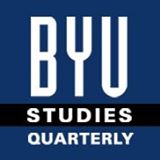BYU Studies

Keywords
Mormon studies, scripture, grammar, lexical
Abstract
Speaking of the last days, the Lord declared through the ancient Israelite prophet Malachi that Elijah would return "before the coming of the great and dreadful day of the Lord" (Mal. 4:5). And through the prophet Joel, the Lord foretold signs in the heavens "before the great and the terrible day of the Lord come" (Joel 2:31). Jesus' Second Coming is the "day of the Lord" referred to in these prophecies. Many Latter0day Saints interpret the phrase "the great and dreadful [or terrible] day of the Lord" to mean the Lord's Second Coming will be "great," or good and desirable, for the righteous, but "dreadful" for the wicked, who will be destroyed. Scripture does indicate that the righteous will rejoice at the Second Coming of the Savior, while the wicked will be filled with fear and remorse. However, interpreting the expression "the great and dreadful/terrible day of the Lord" to mean great for the righteous and dreadful for the wicked misrepresents the original meaning of this phrase. For one thing, the Hebrew language in which this expression was originally written does not support this explanation. For another, the English word "great" was not used with the modern meaning "choice" or "desirable" until long after the King James Version was translated. This study will elucidate the meaning of the expression "the great and dreadful/terrible day of the Lord" by (1) examining the Hebrew grammar and vocabulary behind the English translation of Joel 2:31 and Malachi 4:5; (2) considering the broader biblical context in which this expression appears; (3) highlighting modern prophetic statements that pertain to the meaning of this expression; and (4) comparing this expression with other "great and ____" formulations in scripture.
Recommended Citation
Pike, Dana M.
(2002)
"“The Great and Dreadful Day of the Lord”: The Anatomy of an Expression,"
BYU Studies: Vol. 41:
Iss.
2, Article 14.
Available at:
https://scholarsarchive.byu.edu/byusq/vol41/iss2/14
